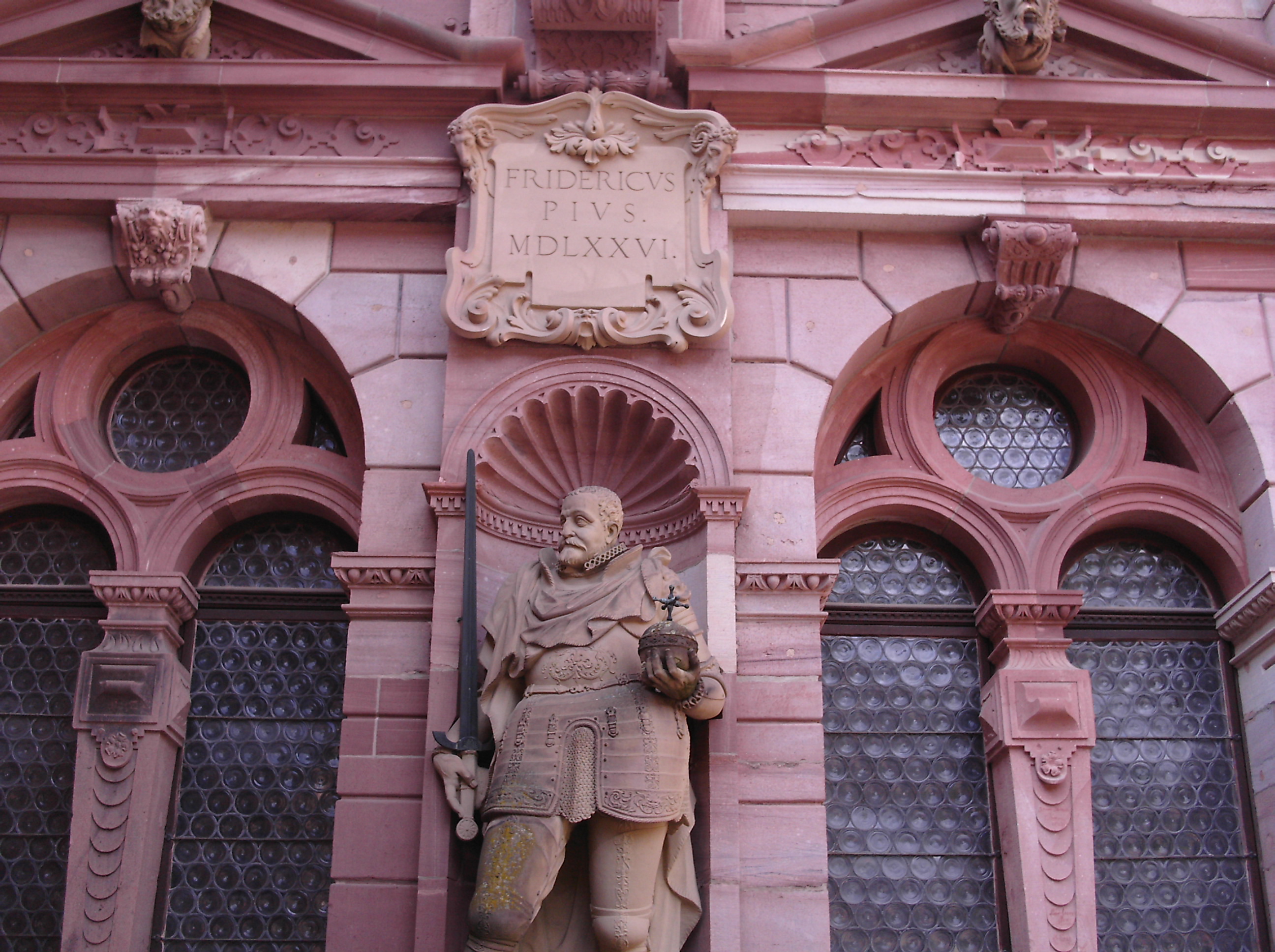The Heidelberg Catechism: “From Divine Sources”


Statue of Elector Frederick III (aka Frederick the Pious) at Heidelberg Castle
Yesterday I had the pleasure of leading the worship services at the Vineyard Canadian Reformed Church in Lincoln, ON. For the afternoon, I was asked to take Lord’s Day 1 as the catechism lesson. Below you can find an excerpt from my introduction. In this excerpt, I quote from Frederick III’s defense of his catechism, offered in 1566 at the Diet of Augsburg. This is especially appropriate to remember this year as we celebrate the 450th birthday of the Catechism.
*******************
This afternoon, we’re beginning another series of sermons on the Heidelberg Catechism. The Catechism can be considered like a road map for the Bible. It doesn’t take the place of Scripture, but it helps us to see the important teachings in it, like a road map helps us see the important places in a region. Moreover, it helps us to organize those teachings in a systematic way. The Bible is a very big and very diverse book. So with the Heidelberg Catechism we have its important teachings organized in a simple and memorable format.
The Catechism was written in Germany in 1563 – 450 years ago this year. It was written during the later years of the Great Reformation. Its primary authors are usually considered to be Zacharias Ursinus and Caspar Olevianus. They were young men (28 and 26) who had been appointed professors of theology at Heidelberg. They had been appointed by Elector Frederick III, the ruler of the Palatinate, a German province. Frederick had arranged for the writing of this catechism with the idea that it would be used for teaching the young people under his rule and that it would guide pastors and teachers in the Palatinate.
Up till now, I suppose that a lot of this is familiar to many of you. However, has it ever struck you that this Catechism, this Reformed Catechism, was written in Germany? Germany is usually associated with Lutheranism, not with the Reformed faith found in the Heidelberg Catechism. You need to know that there was a rift between Calvinists and Lutherans in the time the Catechism was written. To have a German catechism that was Reformed was unusual to say the least. It actually created some controversy.
The patron of the Catechism, Frederick III, was well aware of this controversy. It bothered him enormously. When the Catechism was written and published, German Lutherans raised a stink. They charged that Frederick (and the Palatinate) had turned Reformed. This wouldn’t have been such a big deal if it hadn’t have been for the Peace of Augsburg. Under this treaty between the Holy Roman Emperor Charles V and the German princes, only Lutheranism and Roman Catholicism were permitted in Germany.
Immediately after our Catechism was published 450 years ago, there was enormous opposition to it. Elector Frederick caught the brunt of it and he was eventually called to appear before Emperor Maximilian II at the Diet of Augsburg. Everything was up in the air – Frederick could have lost everything – his office, his life, and his catechism. As he appeared at Augsburg in 1566, Frederick was charged with promoting Calvinism through the Heidelberg Catechism.
Why does this matter for today? It matters because still today there are those who see the Heidelberg Catechism simply as an expression of human opinions and ideas. The Heidelberg Catechism expresses Reformed beliefs, but it is not the Bible. It is true that the Catechism is not the Bible and it is true that it expresses Reformed beliefs – but there is more that needs to be said. Frederick made his defense to Emperor Maximilian and his words should be heard today as well. He reaffirmed the faith he had confessed with the Lutheran princes in 1558 and 1561. However, he went on to say,
…in this faith I continue firmly, on no other ground than because I find it established in the Holy Scriptures of the Old and New Testaments. Nor do I believe that anyone can successfully show that I have done or received anything that stands opposed to that creed. But that my catechism, word for word, is drawn, not from human, but from divine sources, the biblical references that stand in the margin will show.
We’re told that Frederick faced Maximilian, the most powerful human ruler of his day, alongside his son John Casimir. Frederick’s son stood with an open Bible and then Frederick challenged the Emperor with these words,
What I have elsewhere publicly declared to your Majesty in a full assembly of princes; namely, that if anyone of whatever age, station or class he may be, even the humblest, can teach me something better from the Holy Scriptures, I will thank him from the bottom of my heart and be readily obedient to the divine truth. This I now repeat in the presence of this assembly of the whole empire. If there be anyone among my lords and friends who will undertake it, I am prepared to hear him, and here are the Scriptures at hand. Should it please your Imperial Majesty to undertake this task, I would regard it as the greatest favour and acknowledge it with suitable gratitude.
Frederick’s bold challenge went unanswered and the Heidelberg Catechism passed into history as one of the most well-received summaries of scriptural teaching. This is our confession. We do well to follow Frederick’s lead and emphasize that this is not a compilation of human thoughts and doctrines, rather this is the truth of God faithfully distilled into 52 Lord’s Days. We can be thankful for the witness of Frederick and we can also pray that we will continue to have the same Spirit, not only of boldness, but also of being teachable. We should always be willing to be taught from the Scriptures.


